
Deutsch-Chinesische Enzyklopädie, 德汉百科





班贝格(德语:Bamberg),也译作班堡、班贝克或巴姆贝格,是德国巴伐利亚州的直辖市,位于巴伐利亚北部,隶属于上弗兰肯行政区,也是班贝格县的首府。班贝格是一座大学城和行政城市,是天主教班贝格总教区的驻地,也是上弗兰肯地区的重要中心。班贝格老城是德国最大的一座未受战争毁坏的历史城区,1993年入选联合国教科文组织的世界文化遗产名录。班贝格还以多种特产啤酒而出名。
Bamberg (mittelalterlich: Babenberg, bambergisch: „Bambärch“) ist eine kreisfreie Stadt im bayerischen Regierungsbezirk Oberfranken und Standort des Landratsamtes Bamberg. Sie ist die größte Mittelstadt Bayerns, Universitäts-, Schul- und Verwaltungsstadt, wichtiges Wirtschaftszentrum Oberfrankens sowie Sitz des gleichnamigen Erzbistums. Das bekannteste Bauwerk ist der viertürmige Bamberger Dom, einer der früheren Kaiserdome.
Die Stadt ist in der Landesplanung als Oberzentrum des westlichen Oberfrankens ausgewiesen und zählt zur Metropolregion Nürnberg. Bamberg hat etwa 77.000 Einwohner und ist damit die größte Stadt Oberfrankens, die Agglomeration hat rund 112.000 Einwohner.[2]
Die Altstadt ist der größte unversehrt erhaltene historische Stadtkern in Deutschland und seit 1993 als Weltkulturerbe in die Liste der UNESCO eingetragen.[3] Darüber hinaus ist Bamberg überregional bekannt für seine vielfältige Biertradition.
Bamberg (German pronunciation: [ˈbambɛɐ̯k]) is a town in Upper Franconia, Germany, on the river Regnitz close to its confluence with the river Main. A large part of the town has been a UNESCO World Heritage Site since 1993.
Bamberg Écouter (parfois orthographié Babenberg ; Bambärch en bambergeois (de)) est une ville allemande, située dans le sud du pays, dans le nord du Land de Bavière et la région de Haute-Franconie. Elle est le chef-lieu de l'arrondissement de Bamberg et le centre urbain (de) de l'ouest de la région. Elle dépend de la région métropolitaine de Nuremberg (de).
Ville de taille moyenne, elle abrite une université, un archidiocèse et est un centre économique pour la région.
Depuis le début de XIXe siècle, Bamberg a été rattachée à la Bavière. Ville épiscopale, troisième site historique, Bamberg abrite 2 200 monuments historiques. Les églises médiévales côtoient des maisons bourgeoises de style baroque et des édifices monumentaux. Le monument le plus réputé de cette ville est la cathédrale Saint-Pierre et Saint-Georges, dont les quatre tours s'élèvent par-dessus la ville, et qui est l'une des plus anciennes cathédrales de l'Empire.
Bâtie sur sept collines, la ville est née au Moyen Âge et a été transformée aux XVIIe et XVIIIe siècles en cité baroque par les princes-évêques.
En 1007 avec sa femme Cunégonde, Henri II choisit Bamberg comme capitale et évêché. En 1014, il est sacré Empereur du Saint-Empire. L'ancien hôtel de ville du XIVe siècle est bâti sur une île artificielle de la rivière Regnitz.
Sous le règne des princes-évêques Lothaire-François de Schönborn (1693-1729) et Frédéric-Charles de Schönborn-Buchheim (1729-1745), la ville connut, à l'époque baroque, une floraison culturelle.
C'est un important centre économique et culturel de la Franconie (en allemand Franken). Les destructions que connurent la majorité des villes allemandes durant la Seconde Guerre mondiale furent épargnées à Bamberg qui n'était alors pas industrialisée.
« Ville de rêve » (« Traumstadt »), Bamberg est inscrite au patrimoine mondial de l'UNESCO depuis 1993 et son cœur historique figure parmi les mieux préservés d'Allemagne.
La ville compte aujourd'hui environ 75 000 habitants, et jusqu'à 112 000 en tenant compte de l'agglomération.
Bamberga (in tedesco Bamberg, in francone orientale Bambärch) è una città extracircondariale della Baviera, in Germania. È situata nell'Alta Franconia sul fiume Regnitz, vicino alla confluenza col fiume Meno. La sua popolazione è di 69.989 abitanti (2008).[1]
Bamberga è nota anche per la sua intensa produzione di birra ed in particolare per il birrificio Schlenkerla, che risale all'epoca medioevale, e produce la caratteristica ed unica Rauchbier.
La città sorge su sette colli: Domberg, Michaelsberg, Kaulberg/Obere Pfarre, Stefansberg, Jakobsberg, Altenburg e Abtsberg.
Bamberg o Bamberga (en alemán: Bamberg) es una ciudad en la región de Baviera, en Alemania, a orillas del río Regnitz.
Бамберг (нем. и бав. Bamberg, в Средневековье Babenberg, в.-франк. Bambärch) — город окружного подчинения в Верхней Франконии, земля Бавария, Германия. Расположен у реки Регниц. Город является центром городского самоуправления. В городе находится Университет Отто-Фридриха, работают государственные учреждения. Бамберг, как и Рим, расположен на семи горах. В Средние века Бамберг называли «немецким Римом». В соборе Бамберга погребён Климент II (папа римский) — единственный папа, похороненный севернее Альп.
Бамберг — один из немногих старинных городов Германии, уцелевших во время Второй мировой войны и составляющих её историческое наследие. В 1993 году город Бамберг был включен в список Всемирного наследия ЮНЕСКО.
В период 1945 — 2014 гг. в Бамберге базировались американские военные. Они покинули город в сентябре 2014 года.

巴尼亚卢卡[2](塞尔维亚语:Бања Лука/Banja Luka,发音:[bǎɲa lǔːka] (ⓘ)),又译班雅卢卡,是波斯尼亚和黑塞哥维纳实体之一塞族共和国的城市及市镇,位于该国西北部弗尔巴斯河畔。为该国第二大城市,塞族共和国第一大城市及其事实上的首府。巴尼亚卢卡是波斯尼亚地区西北部森林茂密的波什尼亚克拉伊纳地区的传统中心城市。
Banja Luka (serbisch-kyrillisch Бања Лука, Luka) ist eine Stadt im Norden von Bosnien und Herzegowina und Regierungssitz der Republika Srpska. Die Stadt ist Sitz eines serbisch-orthodoxen und römisch-katholischen Bistums sowie der Universität Banja Luka.
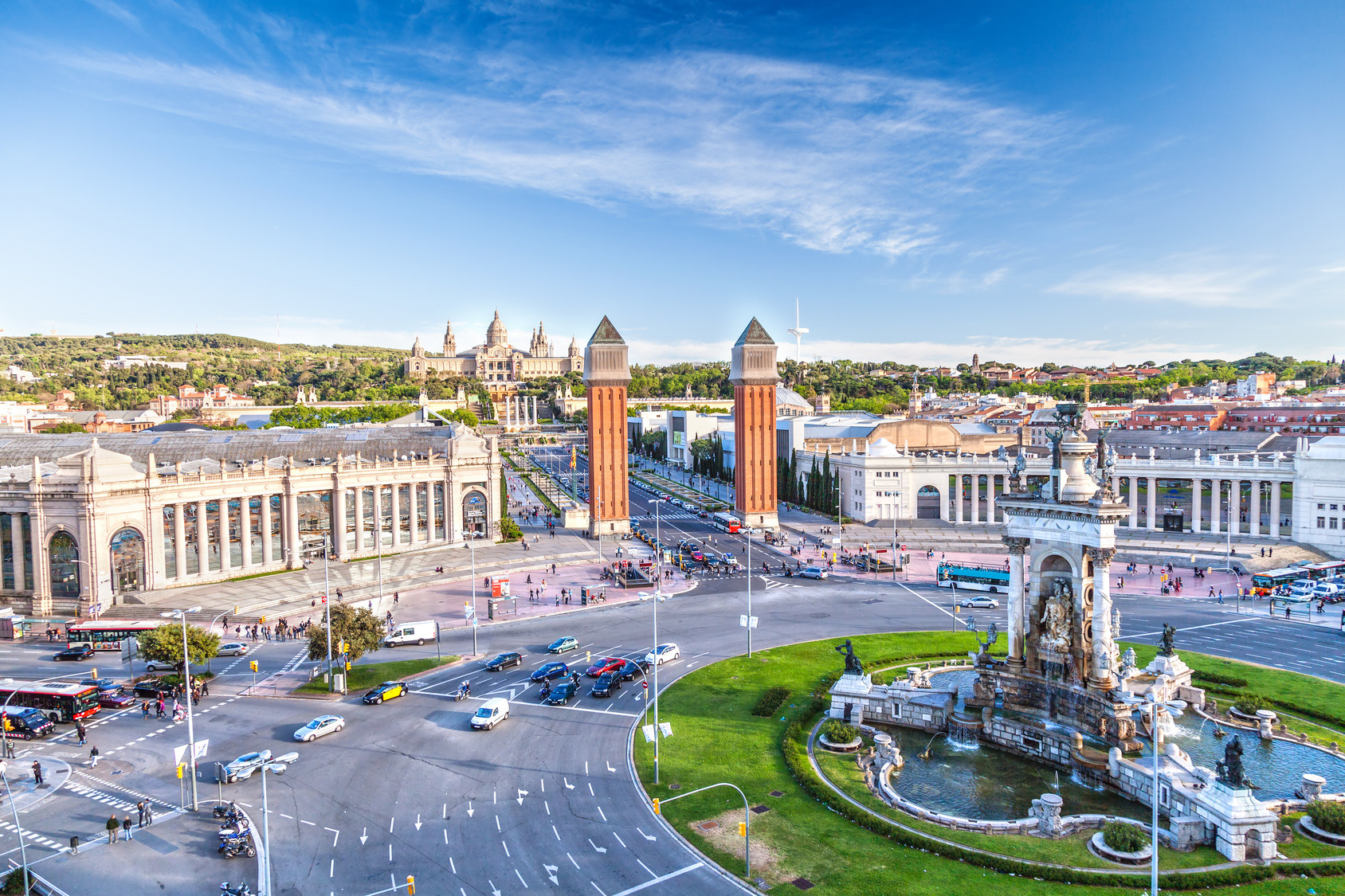
这座城市在展示通俗文化的同时,也没有忘记根深蒂固的传统。比如说,梅尔塞节还有在格拉西亚区、桑斯区或波布雷诺区举办的节庆活动,都向游客提供着不可多得的认识巴塞罗那的欢庆一面的机会。
以蔬果,新鲜水产香肠和橄榄油为基本原料,传统与现代相融合的烹饪手艺可以烹制出具有革新性又富有想象力的美食。于此,手工糖果和泡沫葡萄酒只能浅浅地触摸到巴塞罗那饮食文化的精髓。
巴塞罗那(加泰罗尼亚语:Barcelona,西班牙语:Barcelona)是西班牙加泰罗尼亚首府和巴塞罗那省省会,位于伊比利亚半岛的东北面,濒临地中海,全市人口约160万,都会区人口则约500万,为加泰罗尼亚第一大城。加泰罗尼亚的议会、行政机构、高等法院等政府中枢机构,以及最高首长均驻设于此。1999年,巴塞罗那由美国《国家地理杂志》评选为50个人生必游景点之一。
相传巴塞罗那由迦太基将领、汉尼拔的父亲哈米尔卡·巴卡所兴建,在其漫长的历史上还曾作为巴塞罗那伯爵领地和阿拉贡王国的都城。巴塞罗那因其众多历史建筑和文化景点成为众多旅游者的目的地,其中之代表是被列入联合国世界遗产的安东尼·高第和路易·多门内克·蒙塔内的建筑作品。安东尼·高第一直在巴塞罗那生活和工作,在这里有他很多的作品,其中最著名的包括桂尔宫、桂尔公园和圣家堂。巴塞罗那尚有两个知名的足球俱乐部:巴塞罗那和皇家西班牙人,其中巴塞罗那是世界最著名的足球俱乐部之一。
Barcelona (katalanisch [bəɾsəˈɫonə]; spanisch [baɾθeˈlona]; deutsch [baɐ̯səˈloːna] oder [baɐ̯t͡səˈloːna]) ist die Hauptstadt Kataloniens und nach Madrid die zweitgrößte Stadt Spaniens. Sie liegt am Mittelmeer, circa 120 Kilometer südlich der Pyrenäen und der Grenze zu Frankreich. Barcelona ist Verwaltungssitz der gleichnamigen Provinz und der Comarca Barcelonès.
Innerhalb des Stadtgebietes leben etwa 1,65 Millionen Menschen. Damit ist Barcelona die elftgrößte Gemeinde der Europäischen Union, nach Hamburg die zweitgrößte, die nicht die Hauptstadt eines Mitgliedstaates ist, und nach Paris die am zweitdichtesten besiedelte Millionenstadt Europas. Zusammen mit den in der Àrea Metropolitana de Barcelona zusammengeschlossenen Gemeinden der Agglomeration beträgt die Einwohnerzahl 3,16 Millionen. Im weiteren Einzugsbereich der Metropolregion (Àmbit Metropolità de Barcelona) leben insgesamt 4,86 Millionen Menschen. Mit jährlich mehr als sieben Millionen Touristen aus dem Ausland zählt Barcelona überdies zu den drei meistbesuchten Städten Europas.[2]
Barcelona (/ˌbɑːrsəˈloʊnə/ BAR-sə-LOH-nə, Catalan: [bəɾsəˈlonə], Spanish: [baɾθeˈlona]) is a city in Spain. It is the capital and largest city of Catalonia, as well as the second most populous municipality of Spain. With a population of 1.6 million within city limits,[5] its urban area extends to numerous neighbouring municipalities within the Province of Barcelona and is home to around 4.8 million people,[3][7] making it the sixth most populous urban area in the European Union after Paris, London, Madrid, the Ruhr area and Milan.[3] It is the largest metropolis on the Mediterranean Sea, located on the coast between the mouths of the rivers Llobregat and Besòs, and bounded to the west by the Serra de Collserola mountain range, the tallest peak of which is 512 metres (1,680 feet) high.
Founded as a Roman city, in the Middle Ages Barcelona became the capital of the County of Barcelona. After merging with the Kingdom of Aragon, Barcelona continued to be an important city in the Crown of Aragon as an economic and administrative centre of this Crown and the capital of the Principality of Catalonia. Barcelona has a rich cultural heritage and is today an important cultural centre and a major tourist destination. Particularly renowned are the architectural works of Antoni Gaudí and Lluís Domènech i Montaner, which have been designated UNESCO World Heritage Sites. The headquarters of the Union for the Mediterranean are located in Barcelona. The city is known for hosting the 1992 Summer Olympics as well as world-class conferences and expositions and also many international sport tournaments.
Barcelona is one of the world's leading tourist, economic, trade fair and cultural centres, and its influence in commerce, education, entertainment, media, fashion, science, and the arts all contribute to its status as one of the world's major global cities.[8][9] It is a major cultural and economic centre in southwestern Europe, 24th in the world (before Zürich, after Frankfurt)[10] and a financial centre. In 2008 it was the fourth most economically powerful city by GDP in the European Union and 35th in the world with GDP amounting to €177 billion.[11] In 2012 Barcelona had a GDP of $170 billion; and it was leading Spain in employment rate in that moment.[12]
In 2009 the city was ranked Europe's third and one of the world's most successful as a city brand.[13] In the same year the city was ranked Europe's fourth best city for business and fastest improving European city, with growth improved by 17% per year,[14] and the city has been experiencing strong and renewed growth for the past three years. Since 2011 Barcelona has been a leading smart city in Europe.[15] Barcelona is a transport hub, with the Port of Barcelona being one of Europe's principal seaports and busiest European passenger port,[16] an international airport, Barcelona–El Prat Airport, which handles over 40 million passengers per year,[17] an extensive motorway network, and a high-speed rail line with a link to France and the rest of Europe.[18]
Barcelone (Barcelona en catalan, prononcé /bəɾsəˈlonə/, et en espagnol, prononcé /baɾθeˈlona/) est la capitale administrative et économique de la Catalogne, de la province de Barcelone, de la comarque du Barcelonès ainsi que de son aire et de sa région métropolitaines, en Espagne.
Barcelone est la deuxième ville d'Espagne en termes de population, d'économie et d'activités, la onzième ville la plus peuplée de l'Union européenne et la sixième en incluant sa banlieue4: 4,84 millions de personnes vivent dans l'agglomération barcelonaise5. La majeure partie des municipalités adjacentes sont en outre rassemblées dans l'Aire métropolitaine de Barcelone.
Située sur le littoral méditerranéen, elle est traversée par les fleuves Llobregat et Besòs et bordée à l'ouest par la serra de Collserola qui culmine à 512 mètres (sommet : Tibidabo). Elle est considérée comme ville mondiale en raison de son importance dans les domaines de la finance, du commerce international, de l'édition, des arts, du divertissement et des médias. Barcelone est donc un centre économique majeur qui jouit de surcroît d'un des principaux ports méditerranéens et du deuxième aéroport espagnol derrière celui de Madrid-Barajas. Elle est aussi la ville qui possède le plus grand parc métropolitain du monde, le parc Collserola, devant Central Park à New York. Ayant été fondée par les Romains, la ville devint la capitale des comtes de Barcelone puis l'une des villes majeures de la Couronne d'Aragon et, après, la capitale de la principauté de Catalogne. Redessinée plusieurs fois pendant son histoire, elle est une destination touristique majeure et jouit d'un patrimoine culturel unique. Le palais Güell (en 1984), la Casa Milà, le parc Güell, le palais de la musique catalane et l'hôpital de Sant Pau figurent d'ailleurs sur la liste du patrimoine mondial de l'UNESCO. En outre, la ville est également connue pour avoir accueilli les Jeux olympiques en 1992 et, plus récemment, le siège de l'union pour la Méditerranée. Chaque année, les visiteurs arrivent par milliers et le nombre augmente de plus en plus. En 2015, un total de 8 988 038 touristes ont visité Barcelone6.
Barcellona (AFI: /barʧelˈlona/[1]; in catalano e spagnolo Barcelona) è una città di 1.620.809 abitanti (area metropolitana istituzionale: 3.239.337 abitanti) della Spagna, capoluogo della Catalogna, una comunità autonoma della parte nord-orientale dello Stato, oltre che dell'omonima provincia e della comarca del Barcelonès. Soprannominata Ciutat Comtal o Ciudad Condal (Città dei Conti), è la seconda città della Spagna per numero di abitanti dopo la capitale Madrid.
Nel 1992 fu sede dei Giochi Olimpici estivi. Nel 2004 vi si è tenuto per la prima volta assoluta il Forum Universale delle Culture, la città ha ospitato l'Esposizione internazionale del 1888 e quella del 1929, ed è la sede fissa del Mobile World Congress e dell'Unione per il Mediterraneo. Forte del turismo, del porto e della vicinanza alla Francia (160 km da Le Perthus), la città è il secondo maggior centro industriale e finanziario della Spagna dopo Madrid, nonché il maggior porto commerciale e turistico e uno dei maggiori d'Europa.
Barcelona es una ciudad española, capital de la comunidad autónoma de Cataluña, de la comarca del Barcelonés y de la provincia homónima.
Con una población de 1 620 809 habitantes en 2017,6 es la segunda ciudad más poblada de España después de Madrid, y la undécima de la Unión Europea. El área metropolitana de Barcelona, incluida en el ámbito metropolitano de Barcelona, cuenta con 5 029 181 habitantes (2011), siendo así la sexta ciudad de mayor población de la Unión Europea.78
Se ubica a orillas del mar Mediterráneo, a unos 120 km al sur de la cadena montañosa de los Pirineos y de la frontera con Francia, en un pequeño llano litoral limitado por el mar al este, la sierra de Collserola al oeste, el río Llobregat al sur y el río Besós al norte. Por haber sido capital del condado de Barcelona, se suele aludir a ella con la denominación antonomástica de Ciudad Condal.
La historia de Barcelona se extiende a lo largo de 4000 años, desde finales del Neolítico, con los primeros restos hallados en el territorio de la ciudad, hasta la actualidad. El sustrato de sus habitantes aúna a los pueblos íberos, romanos, judíos, visigodos, musulmanes y cristianos. Como capital de Cataluña y segunda ciudad en importancia de España, la Ciudad Condal ha forjado su relevancia con el tiempo, desde ser una pequeña colonia romana hasta convertirse en una ciudad valorada internacionalmente por aspectos como su economía, su patrimonio artístico, su cultura, su deporte y su vida social.
Barcelona ha sido escenario de diversos acontecimientos internacionales que han contribuido a consolidarla, desarrollarla y darle proyección mundial. Los más relevantes han sido la Exposición Universal de 1888, la Exposición Internacional de 1929, los Juegos Olímpicos de 1992 y el Fórum Universal de las Culturas 2004. Es también sede del secretariado de la Unión para el Mediterráneo.9
En la actualidad, Barcelona está reconocida como una ciudad global por su importancia cultural, financiera, comercial y turística. Posee uno de los puertos más importantes del Mediterráneo y es también un importante punto de comunicaciones entre España y Francia, debido a las conexiones por autopista y alta velocidad ferroviaria. El aeropuerto de Barcelona-El Prat, situado a 15 km del centro de la ciudad, fue utilizado por más de 47,2 millones de pasajeros en 2017.10


巴里(意大利语:Bari)是意大利南部第二大城市,面积116平方公里,人口326,201人(2001年)。巴里是普利亚大区首府,位处亚得里亚海,也是巴里省的首府。1990年代,巴里的人口发展和国家总趋势一致,不断减少,这有利于城域圈的发展。当时很有必要研究城区:现在这个项目正在进行,有12个市镇选择参与其中,约600,000居民。 城镇包括三个部分:半岛北部建筑密集的老城区市,现在主要的夜生活街区之一,其中有著名的圣尼各老圣殿、圣撒比诺主教座堂(1035年 - 1171年)和斯瓦比亚城堡。 巴里的历史可追溯至古罗马帝国时代。其时巴里位处古罗马交通要道上,属一个交汇点。中世纪时巴里屡受战火破坏,更一度被伊斯兰人入侵占据达二十年。文艺复兴时代,巴里为那不勒斯王国之一部分,后来在十九世纪成为意大利王国之一部分。
Bari ist eine italienische Gemeinde, Hauptstadt der Region Apulien sowie Zentrum der Metropolitanstadt Bari und eine bedeutende Hafen- und Universitätsstadt an der Adria.
Bari war bereits während der mittleren Bronzezeit bewohnt. Siedlungsspuren von der mittleren Bronze- (ca. 1700–1350 v. Chr.) bis zur frühen Eisenzeit (ab ca. 950 v. Chr.) fand man an mehreren Stellen der heutigen Altstadt: um die Kirchen St.-Peter, S. Scolastica und S. Maria del Buonconsiglio. Zu den Funden gehören auch Fragmente mykenischer Tongefäße aus dem Späthelladikum III B und III C (spätes 14. bis 12./11. Jahrhundert v. Chr.), die auf Handel mit Griechenland deuten.[2] Im dritten Jahrhundert v. Chr. wurde Bari von Griechen besiedelt, die die Stadt Barion nannten. Als Teil des Römischen Reiches wurde Bari (Barium) zum municipium cum suffragio. In dieser Zeit konnte die Stadt eigene Gesetze erlassen und eigene Münzen prägen. Zwischen 476 und 840 war Bari Teil der Germanenreiche in Italien. Seit dem 4. Jahrhundert ist der Ort Sitz eines Bistums, des heutigen Erzbistums Bari-Bitonto.
Im Jahr 847 eroberte eine Flotte der Sarazenen die Stadt, die dort ein islamisches Emirat in Italien gründeten. 871 wurde Bari wieder vom Byzantinischen Reich eingenommen, das dort das Zentrum seiner italienischen Territorien errichtete.[3] Noch 1002 wurde Bari erneut von Arabern erobert und von der Byzantinischen Armee rasch zurückerobert. Gegen die Byzantiner aber erhob sich der Barenser Melus (Melo) 1009 und 1017; als Ismahel (Ismail) ist er auf dem goldbestickten Sternenmantel verewigt, den er dem deutschen Kaiser Heinrich II. geschenkt hatte.
Am 15. April 1071 eroberten nach dreijähriger Belagerung die Normannen unter Robert Guiskard die Stadt, den zu dieser Zeit letzten Besitz von Byzanz in Italien. 1087 wurden die Gebeine des heiligen Nikolaus von Myra nach Bari gebracht. Der Heilige ist seither in Italien auch als Nicola di Bari bekannt. 1155 rebellierten die Bewohner der Stadt gegen die Normannen. Als Vergeltungsaktion ließ Wilhelm I „der Böse“ im Juni des folgenden Jahres die Stadt bis auf die Kathedrale und die Basilica St. Nicola zerstören und vertrieb die Bewohner.
Unter Friedrich II. erlebte Bari eine Blütezeit. Dieser kam 1221 erstmals in die Stadt. Bei seiner Rückkehr von seinem Kreuzzug nach 1229 waren die Tore der Stadt verschlossen, so dass er sich gewaltsam Zutritt verschaffen musste. Daher ließ er vermutlich das Kastell bauen, um die Stadt in Schach zu halten. Andererseits gewährte er der Stadt großzügige Handelsprivilegien und beließ ihr die führende Rolle in der Region. Umso härter traf Bari die Bevorzugung fremder Kaufleute und Bankiers unter den Anjou. Nach zahlreichen Wirren und Machtkämpfen unter dem Adel begann erst 1813 unter Joachim Murat, dem zum König von Neapel aufgestiegenen Schwager Napoleons, der Bau der Neustadt.
バーリ(伊: Bari (![]() 音声ファイル))は、イタリア共和国南部の都市で、その周辺地域を含む人口約32万人の基礎自治体(コムーネ)。プッリャ州の州都であり、バーリ県の県都である。
音声ファイル))は、イタリア共和国南部の都市で、その周辺地域を含む人口約32万人の基礎自治体(コムーネ)。プッリャ州の州都であり、バーリ県の県都である。
アドリア海に面した港湾都市であり、東地中海の国々と広範囲な貿易をおこなう商業の一大中心地である。サンタクロースのもととなった聖人ニコラオス(聖ニコラ)ゆかりの地として巡礼地ともなっている。
Bari (Italian pronunciation: [ˈbaːri] ( listen); Barese: Bare [ˈbæːrə]; Latin: Barium; Ancient Greek: Βάριον, translit. Bárion) is the capital city of the Metropolitan City of Bari and of the Apulia region, on the Adriatic Sea, in southern Italy. It is the second most important economic centre of mainland Southern Italy after Naples and Palermo, a port and university city, as well as the city of Saint Nicholas. The city itself has a population of 326,799, as of 2015, over 116 square kilometres (45 sq mi), while the urban area has 700,000 inhabitants. The metropolitan area has 1.3 million inhabitants.
listen); Barese: Bare [ˈbæːrə]; Latin: Barium; Ancient Greek: Βάριον, translit. Bárion) is the capital city of the Metropolitan City of Bari and of the Apulia region, on the Adriatic Sea, in southern Italy. It is the second most important economic centre of mainland Southern Italy after Naples and Palermo, a port and university city, as well as the city of Saint Nicholas. The city itself has a population of 326,799, as of 2015, over 116 square kilometres (45 sq mi), while the urban area has 700,000 inhabitants. The metropolitan area has 1.3 million inhabitants.
Bari is made up of four different urban sections. To the north is the closely built old town on the peninsula between two modern harbours, with the Basilica of Saint Nicholas, the Cathedral of San Sabino (1035–1171) and the Hohenstaufen Castle built for Frederick II, which is now also a major nightlife district. To the south is the Murat quarter (erected by Joachim Murat), the modern heart of the city, which is laid out on a rectangular grid-plan with a promenade on the sea and the major shopping district (the via Sparano and via Argiro).
Modern residential zones surrounding the centre of Bari were built during the 1960s and 1970s replacing the old suburbs that had developed along roads splaying outwards from gates in the city walls. In addition, the outer suburbs developed rapidly during the 1990s. The city has a redeveloped airport named after Pope John Paul II, Karol Wojtyła Airport, with connections to several European cities.
Bari écoutez (Bari en italien, ['baːri], Bàre en dialecte, Vare dans l'ancien dialecte3, Barium en latin, Barion en grec) est une ville italienne de plus de 325 000 habitants, chef-lieu de la ville métropolitaine de Bari et de la région des Pouilles, sur la côte adriatique.
Bari est la ville principale d'une agglomération urbaine de plus de 700 000 habitants. Pour l'ensemble de la surface urbanisée, ce chiffre s'élève à environ 1 300 000 habitants4.
Bari est la neuvième ville italienne par sa population, la troisième du Sud de l'Italie et la première de la région. La ville est l'une des quinze métropoles italiennes5.
Bari est connu pour être la ville où se trouvent les reliques de saint Nicolas. Ce privilège a fait de Bari et de la basilique de la ville l'un des centres importants de l'Église orthodoxe en Occident6. Bari a une forte tradition marchande et est depuis toujours un centre névralgique du commerce et des échanges politico-culturels avec l'Europe et le Moyen-Orient. Son port est actuellement le plus grand port de passagers de la mer Adriatique. Depuis 1930, la Fiera del Levante se tient à Bari et, plus récemment, la ville est devenue le siège du secrétariat du Corridor paneuropéen VIII7.
Le centre historique appelé Bari Vecchia est empreint d'une histoire millénaire et contraste avec le Quartier Murat datant du XVIIIe siècle dont le nom est issu du général Murat. Le quartier est organisé en damier et représente le mieux la tradition commerciale de la ville. Après la Seconde Guerre mondiale, l'urbanisation rapide et souvent incontrôlée a rendu moins régulière la partie moderne de la ville qui s'est développée au-delà du quartier murattiano8.
Bari (ascolta[?·info], AFI: ['baːri]; Bare - ['baːrə] - in dialetto barese, fino al 1931 Bari delle Puglie[3]) è un comune italiano di 321.222 abitanti capoluogo della regione Puglia.
È il nono comune italiano per popolazione, terzo del Mezzogiorno dopo Napoli e Palermo. La sua area metropolitana è la sesta d'Italia con quasi 1 300 000 abitanti[4].
È nota anche per essere la città nella quale riposano le reliquie di San Nicola. Tale condizione ha reso Bari e la sua basilica uno dei centri prediletti dalla Chiesa ortodossa in Occidente e anche un importante centro di comunicazione interconfessionale tra l'Ortodossia e il Cattolicesimo.
Bari ha una solida tradizione mercantile - imprenditoriale e da sempre è punto nevralgico nell'ambito del commercio e dei contatti politico-culturali con il Medio Oriente. Il suo porto è il maggiore scalo passeggeri del mare Adriatico. Dal 1930 si tiene a Bari la Fiera del Levante, tra le principali esposizioni fieristiche d'Italia. Più recentemente la città è diventata sede del segretariato per il Corridoio pan-europeo 8.
Bari (Bare IPA: ['ba:rə] en dialecto barese, Vare IPA: ['bε:rə] en el antiguo dialecto barese) es una ciudad de Italia, capital de la Ciudad metropolitana homónima y de la región de Apulia. Es la tercera principal ciudad de la Italia meridional tras Nápoles y Palermo. Se localiza en la costa del mar Adriático y su provincia (Ciudad metropolitana desde el 1/1/2015) es la quinta en extensión del país. Cuenta con 327.361 habitantes (31-12-2014), 750.000 en el área urbana y 1.266.000 en el área metropolitana. Limita con las comunas Adelfia, Bitonto, Bitritto, Capurso, Giovinazzo, Modugno, Mola di Bari, Noicattaro, Triggiano y Valenzano.
Ба́ри (итал. Bari, тарант. Bare, др.-греч. Βάριον, лат. Barium) — город-порт на юге Италии. Столица региона Апулия и административный центр одноимённой провинции[2].
Покровителем города считается Николай Чудотворец, чьи мощи хранятся в местной одноименной базилике. Праздник города — 9 мая.
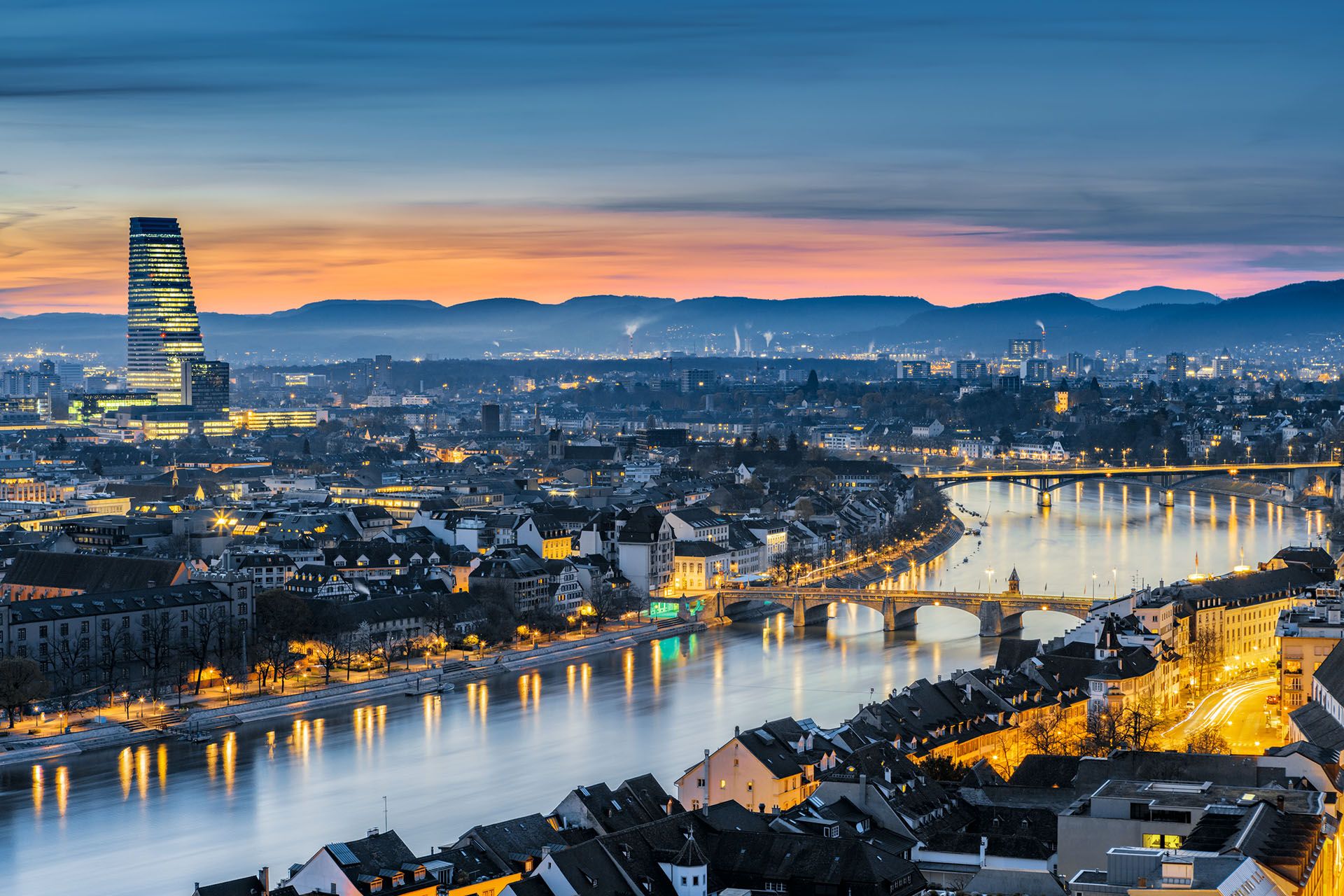
巴塞尔(又称为巴泽尔、巴色,德语:Basel,法语:Bâle,意大利语:Basilea)是瑞士的第三大城市,仅次于苏黎世和日内瓦,2018年12月31日统计人口172,258名,是巴塞尔城市州(德语:Basel-Stadt,法语:Bâle-Ville)的首府。巴塞尔坐落于瑞士西北的三国交角,西北邻法国阿尔萨斯,东北与德国南北走向的黑森林山脉接壤;而莱茵河在此东注北涌穿城而去,将巴塞尔一分为二,版图较大者位于西岸称为大巴塞尔区,小巴塞尔区则位于东岸。
巴塞尔与邻近的自治市里恩(Riehen)、贝廷恩(Bettingen BS)以及城市附近的古老渔村克莱恩许宁恩(Kleinhüningen)联合形成巴塞尔城市州。
巴塞尔被誉为瑞士的文化首都[1]。整个巴塞尔城市州境内有近40座博物馆和各种文化设施。许多巴塞尔的文化和艺术机构是世界著名的。相对于它的面积和人口数来看巴塞尔是欧洲重要的文化中心之一。巴塞尔美术馆是瑞士最重要的公共艺术收藏[2]。1661年巴塞尔市收购了阿默尔巴赫小屋并把它公开展出,这是巴塞尔美术馆的起源,也使得巴塞尔美术馆成为世界上最古老的艺术博物馆。
巴塞尔大学成立于1460年,是瑞士最早的大学,也是整个欧洲大陆上历史最悠久的大学之一。德西德里乌斯·伊拉斯谟、帕拉塞尔苏斯、丹尼尔·伯努利、莱昂哈德·欧拉、弗里德里希·尼采、卡尔·雅斯贝尔斯、诺贝尔奖获得者塔德乌什·赖希施泰因等著名学者都曾经在这里授课。1897年在西奥多·赫茨尔组织下首届世界锡安主义者大会在巴塞尔召开。到1948年以色列建国为止锡安主义者大会一共10次在巴塞尔举办,比世界上任何其它城市都多[3]。
巴塞尔市中心是围绕着市政大厅及14世纪建成的巴塞尔大学附近形成的。狭窄的街道及小路,因为被莱茵河隔断而建立的桥梁都是巴塞尔的特色之处。进入市中心部分则因为保护关系除了搭载游客的电车外,是没有任何机动交通工具的。
巴塞尔市是瑞士第二大经济中心,仅次于苏黎世市,是全国人均GDP最高的州,领先于楚格州和日内瓦州。就价值而言,巴塞尔城超过94%的商品出口在化学和制药领域。由于生产设施位于邻近的Schweizerhalle,巴塞尔占瑞士出口的20%,产生了全国产品的三分之一。
巴塞尔是化工和制药工业发达的地区,尤其以知名药业公司诺华(Novartis)和霍夫曼·罗氏集团(Hoffmann - La Roche)为首的瑞士最大的药品公司总部都设在巴塞尔。巴塞尔博览会是世界知名的博览会,巴塞尔也是一个重要的银行城市,国际清算银行的总部就在巴塞尔。位于巴塞尔附近的穆滕茨(Muttenz)是全欧洲最大的铁路调路及分路车站。巴塞尔港口是瑞士仅有的由莱茵河畔向北海的出口。巴塞尔-米卢斯-弗赖堡欧洲机场是与邻近的法国一同管理的,它位于法国境内,由一条高速公路通往瑞士境内。边界关税于是成为了机场范围内的收费项目。
巴塞尔与苏黎世和日内瓦一同名列全世界生活质量最高的十座城市之内[4]。
Basel  [ˈbɑːsəl]?/i (französisch Bâle, italienisch Basilea, rätoromanisch
[ˈbɑːsəl]?/i (französisch Bâle, italienisch Basilea, rätoromanisch  Basilea?/i) ist eine Schweizer Grossstadt sowie Hauptort des Kantons Basel-Stadt, den sie mit den Gemeinden Riehen und Bettingen bildet. Nach Zürich und Genf ist Basel mit 173'863 Einwohnern die drittgrösste Stadt der Schweiz.[5]
Basilea?/i) ist eine Schweizer Grossstadt sowie Hauptort des Kantons Basel-Stadt, den sie mit den Gemeinden Riehen und Bettingen bildet. Nach Zürich und Genf ist Basel mit 173'863 Einwohnern die drittgrösste Stadt der Schweiz.[5]
Basel gilt als die Kulturhauptstadt der Schweiz.[6][7] Mit nahezu vierzig Museen auf dem gesamten Kantonsgebiet und einem breiten Kulturangebot ist Basel für seine zahlreichen Kunst- und Kulturinstitutionen von Weltrang berühmt, was die Stadt im Verhältnis zu ihrer Grösse und Bevölkerung ebenfalls zu einem der grössten Kulturzentren Europas macht. Das städtische Kunstmuseum stellt hier die gemeinhin als wichtigste erachtete öffentliche Kunstsammlung der Schweiz aus.[8] Die Sammlung gilt mit dem im Jahr 1661 von der Stadt erworbenen «Amerbach-Kabinett» als das älteste öffentlich zugängliche Kunstmuseum der Welt.[9]
Die 1460 gegründete Universität Basel ist die älteste der Schweiz sowie eine der ältesten von ganz Europa. An ihr lehrten und forschten über die Jahrhunderte hinweg unter anderem Erasmus von Rotterdam, Paracelsus, Daniel Bernoulli, Leonhard Euler, Friedrich Nietzsche, Karl Jaspers, der Nobelpreisträger Tadeus Reichstein und die Philosophin Jeanne Hersch.[10] In Basel fand 1897 ausserdem der erste Zionistische Weltkongress unter Leitung von Theodor Herzl statt. Insgesamt fand der Kongress bis zur Staatsgründung Israels im Jahr 1948 zehn Mal in der Stadt am Rheinknie statt, mehr also als in jeder anderen Stadt der Welt.[11]
Das Basler Münster bildet zusammen mit seiner Pfalz das historische Zentrum der Stadt am Rheinknie
Basel ist ein weltweit führendes Zentrum der Chemie- und Pharmaindustrie, ein weltbekanntes Messezentrum sowie ein wichtiger Standort als Bankenplatz. So haben unter anderem die beiden Pharmaunternehmen Novartis und Hoffmann-La Roche sowie die Bank für Internationalen Zahlungsausgleich ihren globalen Hauptsitz in Basel.
Die Unternehmensberatungsfirma Mercer wertete Basel Jahr 2019 neben Zürich und Genf zu den zehn Städten mit der weltweit höchsten Lebensqualität.


 International cities
International cities

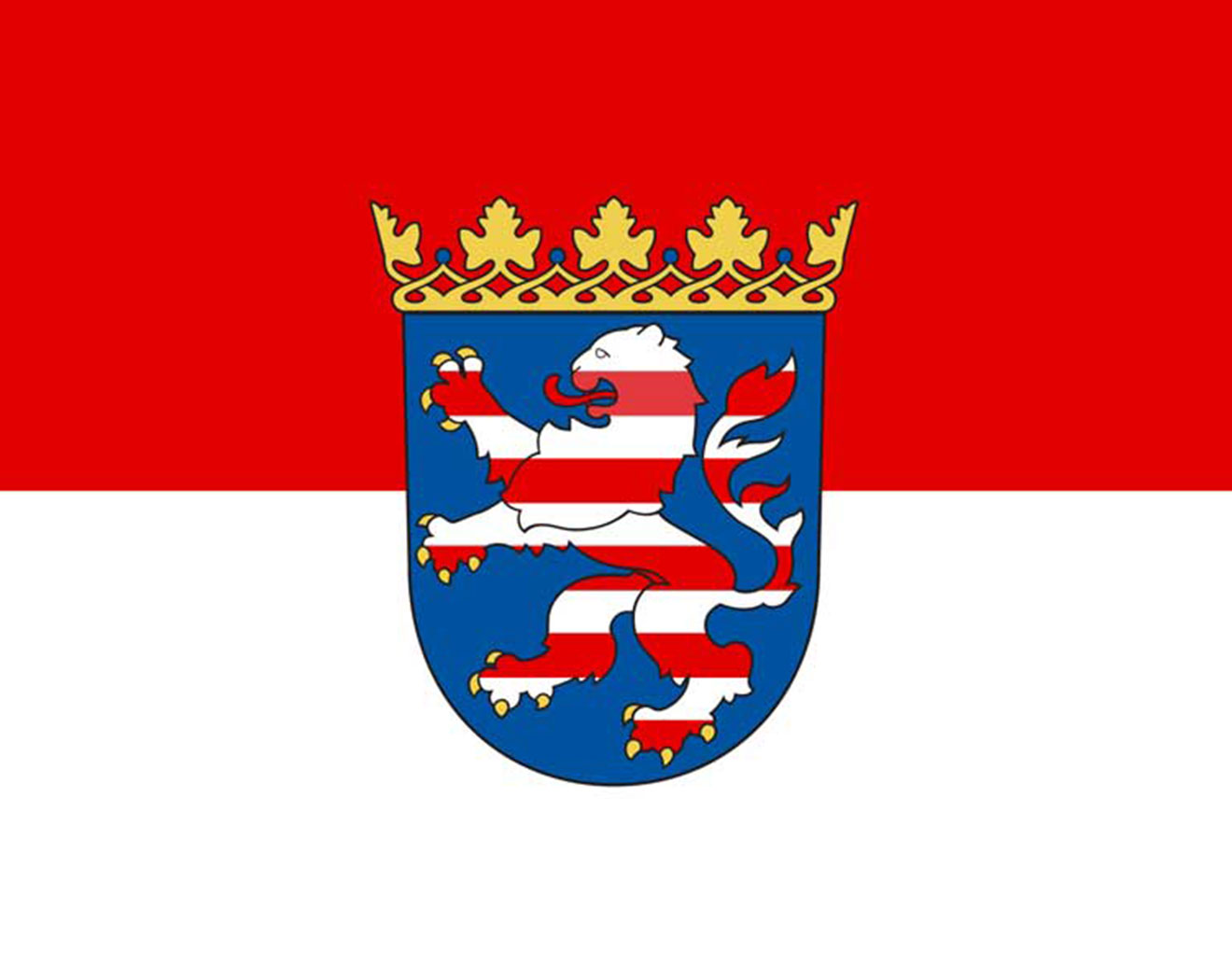 Hessen
Hessen
 Vacation and Travel
Vacation and Travel
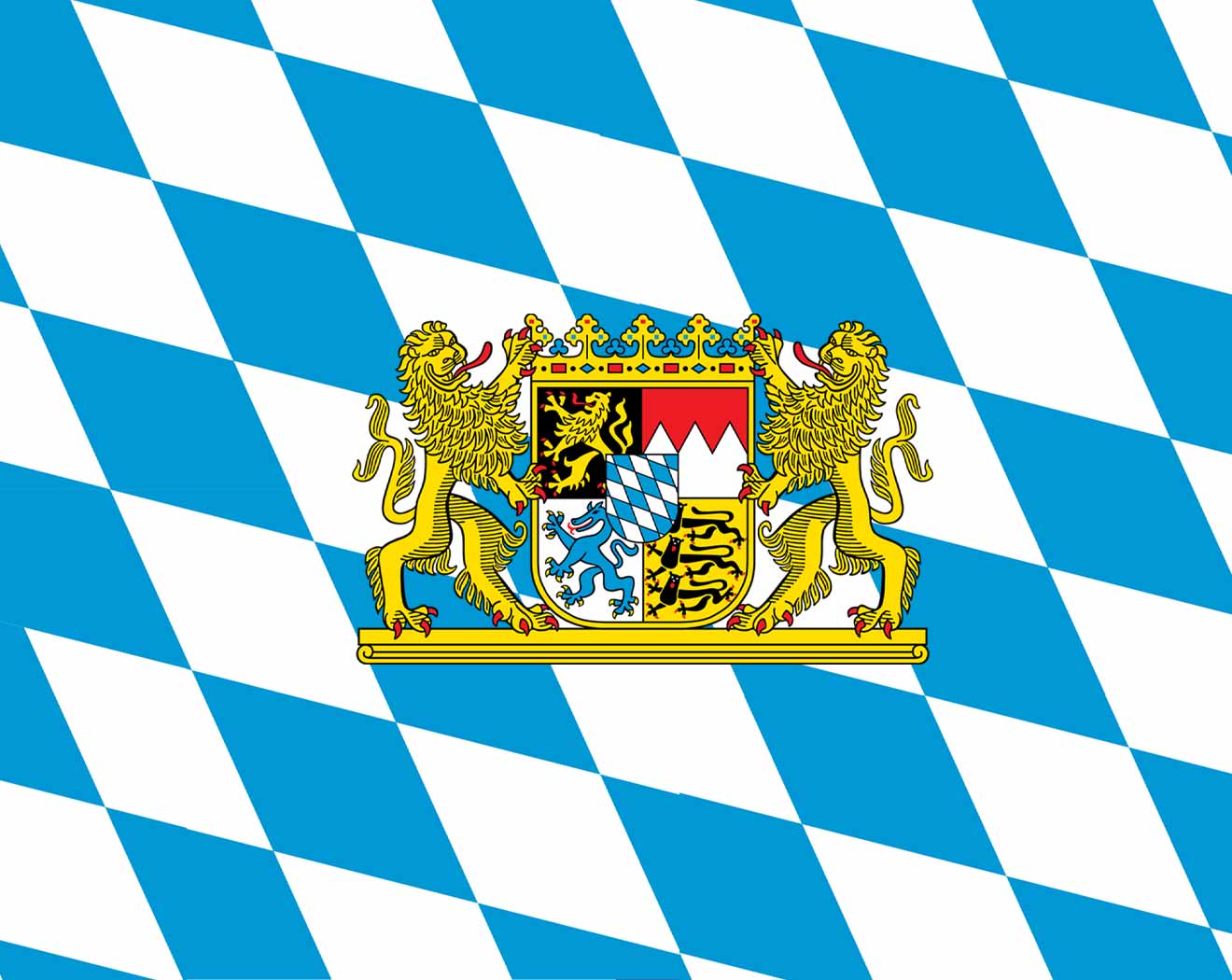 Bavaria
Bavaria
 World Heritage
World Heritage
 Lower Austria
Lower Austria
 History
History
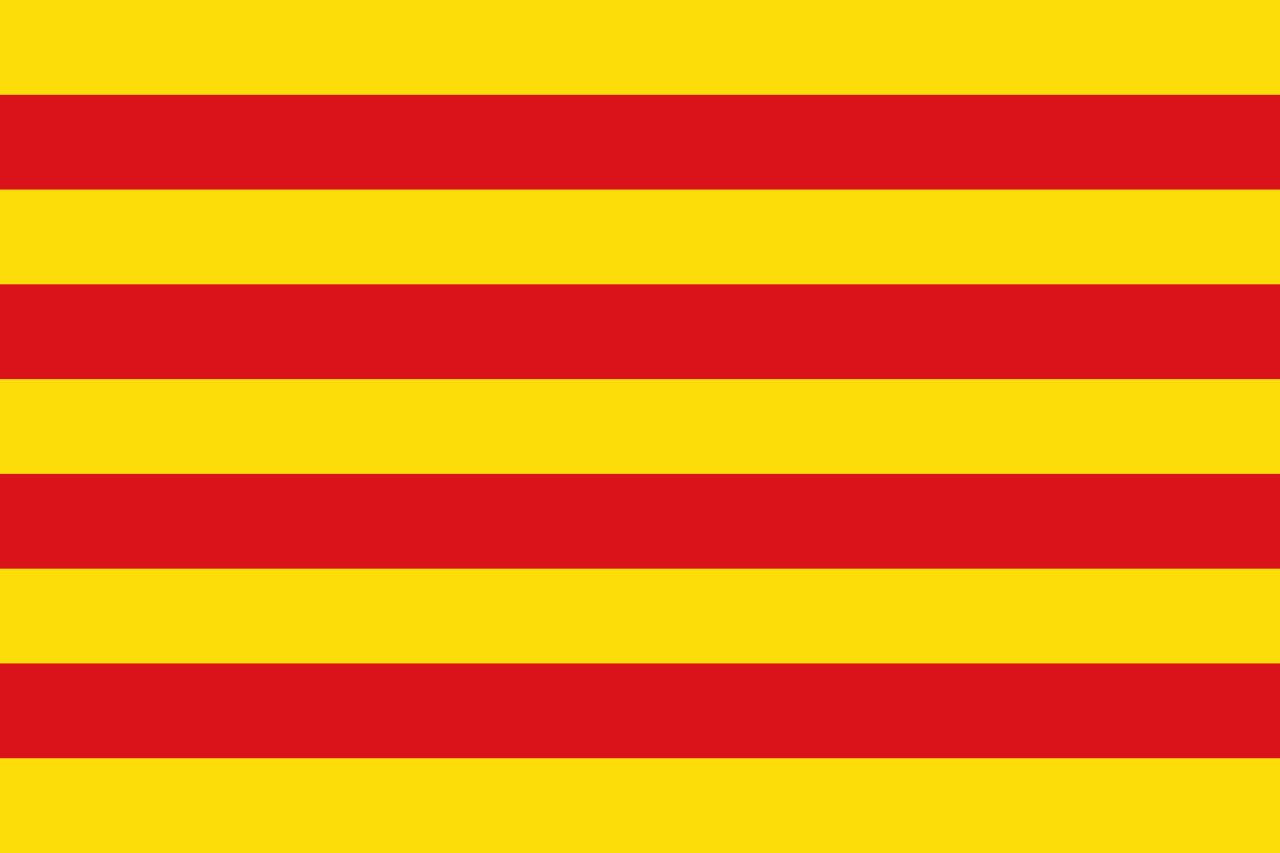 Cataluña
Cataluña
 Cities founded by the Romans
Cities founded by the Romans
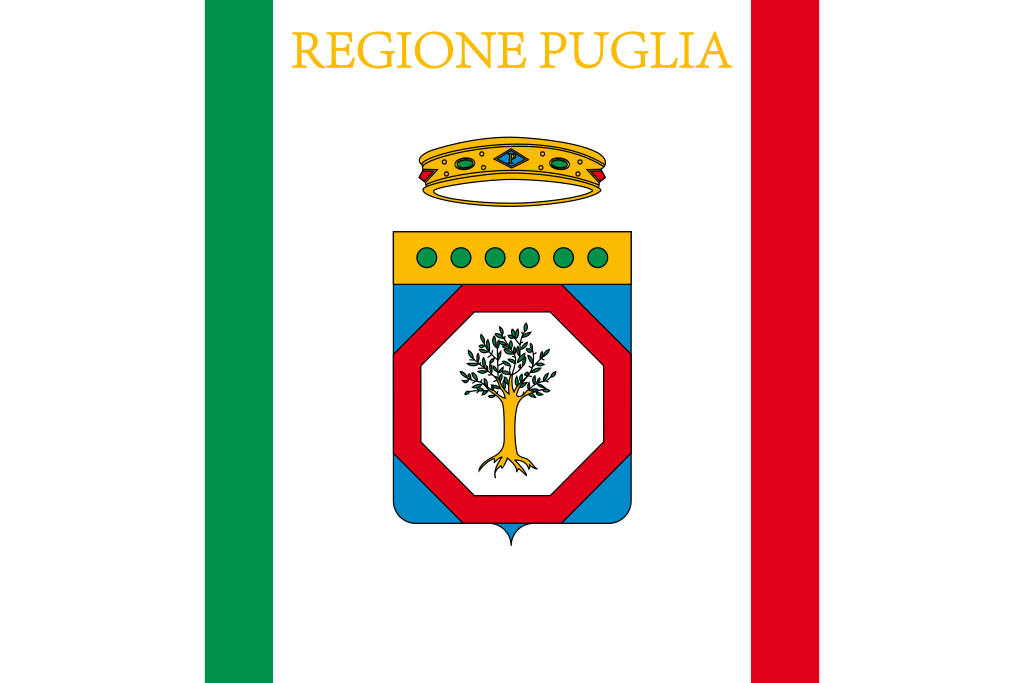 Puglia
Puglia
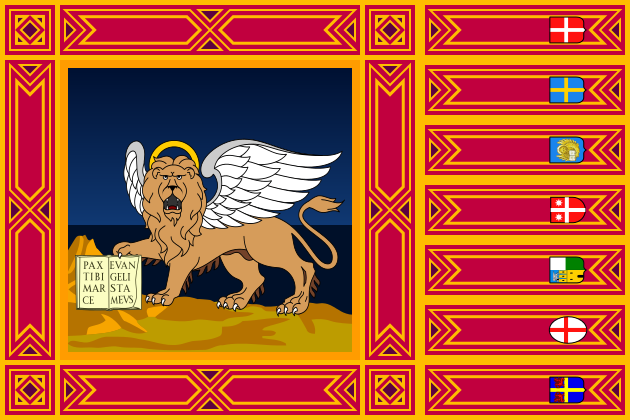 Veneto
Veneto
 Corse
Corse